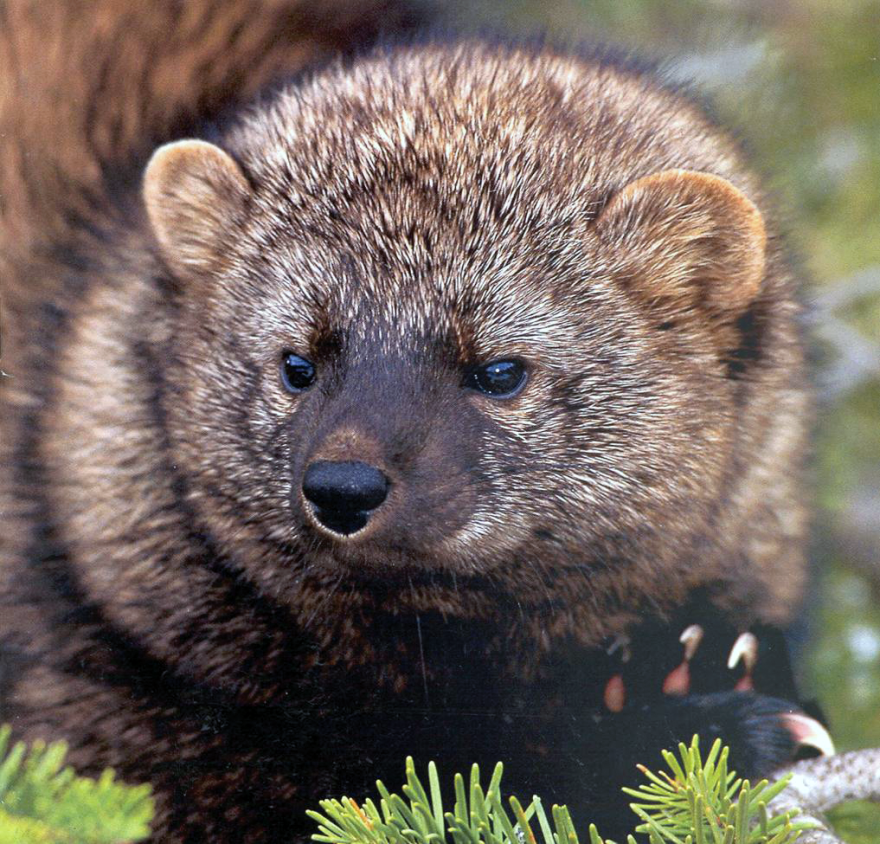As my dog starts to circle, the porcupine turns its rear end to my dog and begins to back into him, thrashing its tail back and forth. Lunging at the porcupine, my dog comes up with a face full of quills. As he winces back to my side, I begin to wonder what type of animal has the ability to prey upon a porcupine without receiving a penalty for its meal. My dog’s nose shoots high into the air as a cool breeze moves gently through his fur. He begins to filter through the familiar scents of the forest, recognizing a particularly enticing one. With wide eyes and attentive ears, he makes a right-hand turn and sprints off into the wind.
A porcupine meanders through the underbrush in search of food, unaware of the approaching menace. The porcupine’s long quills rest softly on its back in their relaxed position as it nibbles on a pine branch. My dog covers the ground quickly only to discover that his target is covered in sharp points. Head and shoulders lowered, the porcupine’s quills immediately become erect in order to state their presence as a threat. As my dog starts to circle, the porcupine turns its rear end to my dog and begins to back into him, thrashing its tail back and forth. Lunging at the porcupine, my dog comes up with a face full of quills. As he winces back to my side, I begin to wonder what type of animal has the ability to prey upon a porcupine without receiving a penalty for its meal. Though the porcupines seem to be fully protected in their prickly suit of armor, there is one animal that has adapted to take advantage of a weakness in their shield.

While porcupines have many predators, including red fox, coyotes, wolves, bears, mountain lions, lynx, bobcats, eagles, and great horned owls, the fisher is a uniquely adapted one.
Longer legs or wings force most of the porcupine’s predators to strike from above, where there is no gap in the shield of quills. Most of the porcupine’s potential predators probably leave it till last on their list of potential meals. But for the fisher, quills do not seem to be such an obstacle. Unlike longer-legged predators, fishers are the same height as porcupines and are able to attack them face to face.
A porcupine’s face is its only unprotected portion other than its belly, and the fisher has evolved quickness and agility in order to take advantage of this gap in the porcupine’s armor. Quills guarding its face from above are useless against attackers coming from below. The fisher is weasel-shaped, long and low to the ground, which gives it a clear advantage over the porcupine. It rapidly strikes the face of the porcupine in order to injure its prey. Often, the attack can take over a half an hour until the fisher can inflict a lethal bite.
A porcupine spends most of its time in trees, where it is safe from terrestrial assailants. This tactic may work for many predators, but it is useless against the fisher. This long, sleek creature will use its supreme arboreal abilities to chase a porcupine up a tree and wear down its prey before attacking. Like a squirrel, a fisher can climb a tree and then swivel around and descend head first into the porcupine, forcing it to the ground. Once on the ground, the agile fisher now has the advantage over its sluggish prey.
The attack usually ensues in a circle, as the porcupine is constantly trying to turn its quills towards the fisher in order to shield its face. A porcupine will whip its tail back and forth, trying to land a blow and fend off the attacking predator. But sometimes the fisher’s quickness and agility fail to evade the lashing tail and the fisher will receive a face full of quills. Though a fisher is not completely immune to a porcupine quill, it is able to fend off serious infections from quill injuries that would otherwise kill most animals. Tagged fishers are often found with quills embedded deep within the skin from previous encounters. Though they may be a nuisance to the fisher, the quills do not seem to have any life-threatening effects.
In the late 19th and early 20th centuries, fishers were harvested for their beautiful dark brown pelt and as a result underwent a steep population decline. Logging was also a threat to their existence as old-growth forests have been largely cut down. As a result, porcupine populations began to increase dramatically due to a lack of predators. In some areas, fishers were reintroduced in order to control the porcupine populations. Scientists believe that fishers and porcupines coevolved in a predator-prey relationship. The porcupine may seem to have the ultimate defense against predation, but something will always evolve to take advantage of another’s weakness.
"Field Notes" is produced by the Montana Natural History Center.
(Broadcast: "Field Notes," 9/10/19 and 9/13/19. Listen weekly on the radio Tuesdays and Fridays at 4:54 p.m., or via podcast.)





